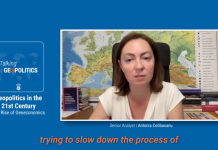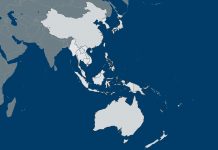Medical research is always involved in the important work of understanding disease and the human body. It is now at the center of a global crisis whose evolution can define the international system, the internal systems of nation-states and the shape of our lives. The medical system is no longer vital only to the management of disease but also to the future of humanity. This statement will seem hyperbolic. I don’t think it is. Unlike other global crises, like the threat of nuclear war or the possibility of global warming, COVID-19 threatens to fundamentally disrupt civilizations, and unlike these other existential crises, how it evolves depends on the successes and failures of medical research.
Like the military or the financial system, the medical system is a social system. It is a substantial establishment, in the United States but also in many other countries. It has fought battles against devastating diseases such as polio, HIV, heart disease and the like. It sometimes succeeds, it sometimes fails and it sometimes falls in between. It conducts its battle with patient research, and expending time in order to prevent doing harm. It is not at the center of society usually, but at the points where many of us will live or die. In the United States, the establishment is part government and part private. In that way, it tracks with other institutions.
The arrival of COVID-19 was unexpected. It arrived in China sometime in early winter and migrated throughout the world, if the current narrative is true. For all we know it may have been lurking in the dark corners for decades. The political system will of course engage in a debate about who should have known what and when, hoping to find a person or country to hold responsible for our misery. The function of the political system is to stabilize all the other systems, and one of its means, odd though it might seem, is to personalize the responsibility for all things. Nothing just happens. Someone had to be responsible. This stabilizes the system because it reassures people that we are in control of our lives. Even if someone failed to do his job and must pay, it is reassuring to know that someone could have been in control. However, the fact is that thinking that an elected official would have any idea of what to do with this disease is preposterous.
It is preposterous because the medical institution, the one that is responsible and knowledgeable in such things, hasn’t been able to come to grips with it. It is said that some have forecast such a pandemic for years. A forecast such as that is useless, which I as a forecaster have the right to say. Without some sense of when and what, no action is possible. But the forecaster can claim prescience, when it is merely the fact that a broken clock is right twice a day.
It is the medical system that was charged with protecting us from this disease. No institution can possibly be infallible, and each is limited by its knowledge and culture. The medical research establishment did not understand the nature of the disease. It still is uncertain whether catching the disease provides immunity or whether we will spend our lives in endless recurrence. It has at the moment no treatment that might mitigate the disease nor any that might prevent it. The culture that medical research has presented and projected to the world is that it is intensely at work, but that its work cannot be time-sensitive. It cannot be hurried, but its process must take its course.
This is not an unreasonable standpoint, but it has consequences. The only solution the medical system had was to prevent the spread of the disease by sequestration, the separation of individuals from each other. This may have had some mitigating effect on the disease, but it is having a disastrous effect on society. It is not hyperbolic to say that we are heading for a depression. The best available medical solution reduced the available labor force, reduced consumption and in many countries forced extravagant government infusions of money, infusions for which we will pay later. A depression is a disease in its own right. Poverty and despair cause their own deaths, but it is the loss of expectations and hopes that is the highest cost. I say we seem to be heading toward depression, not that we are there. Still, the danger is there and it is not trivial.
The mitigation of the spread of the disease has, apart from the social pressures of sequestration, generated a significant economic crisis. The response has been myriad decisions based not on certainty but on calculated risk. The government does not know that the trillions of dollars to stabilize the economy will abort a depression, but it does know that the cost of a depression justifies taking a risk and racking up debt. Each of us, in some small or large way, has engaged in calculated risk.
The moral foundation of medicine is that it must, first of all, do no harm. By “harm” it means that no action of the physician or the researcher should harm the patient. This imposes a meticulous discipline on medicine. No drug is released until it is certain that it will do no harm. This requires meticulous testing and evaluation, and that takes time. Part of the medical research process is imposed by the complexity and mystery of the subject. Part of it is due to the moral aversion to risk. And that aversion to risk can turn a virtue into a vice.
The medical profession cannot eliminate risk, but doing no harm makes it a moral imperative. Other systems operate not on a zero-risk principle but on the principle of calculated risk. Defining this principle is difficult because it is both constantly shifting and different from structure to structure. In finance, calculated risk is the moral norm, although error can have devastating effects on people. Certainty is impossible. Refusing to act carries its own risks and costs. In a military operation, where it is a matter of life and death, the risk is calculated with care, but so is the consequence of inaction. Most important for both is time. The opportunity or danger shifts its shape continually. Time is a precious commodity that has to be measured and spent prudently. Time and risk are intimately linked, and human beings are constantly searching, however imperfectly, for the balance. At certain points, it is a moral or practical imperative that risk must be taken, even if it might cause harm. This dynamic defines our lives.
Medical research is bound not to inflict harm. As a result, there is a constant search for moving “a medication might help” to “a medication will help and won’t cause harm.” The distance between the first and the second can be months or years. The issue is the difference between “probably” and “certainly.” The medical aversion to “probably” will limit the harm done by the researchers and physicians. But the time between probably and certainly carries its own, possibly devastating cost. The longer the pandemic continues, the greater the harm it does. In refusing to incur risk, the medical system imposes heavy costs.
In most structures, there are normal operations and emergency operations. What takes a year in the military in normal times might be done in a week in an emergency. In most structures, an emergency means the acceptance of a degree of failure that would not be acceptable otherwise in order to gain time. In the military, such shortcuts may well cause deaths, even to civilians. But not taken, these risks certainly increase deaths.
Time is of the essence, and no one will claim that the medical profession is wasting time. But by not adopting the principle of calculated risk, by not accepting that sometimes a hoped-for cure will do some harm, it guarantees that the death toll will mount. Some 80,000 Americans, and hundreds of thousands more elsewhere, are dead. More will die. There is a saying that the perfect is the enemy of the good. In a way, that is at the heart of calculated risk, and calculated risk is at the heart of life. Certainty carries with it a cost and uncertainty carries a risk.
Extensive testing of potential treatments is imperative in normal times. These are far from normal times. People will die from a failed medication. But people are dying without a medication. “Do no harm” is an admirable and desirable principle. But moral absolutes may not be as useful right now as the principle of calculated risk.







